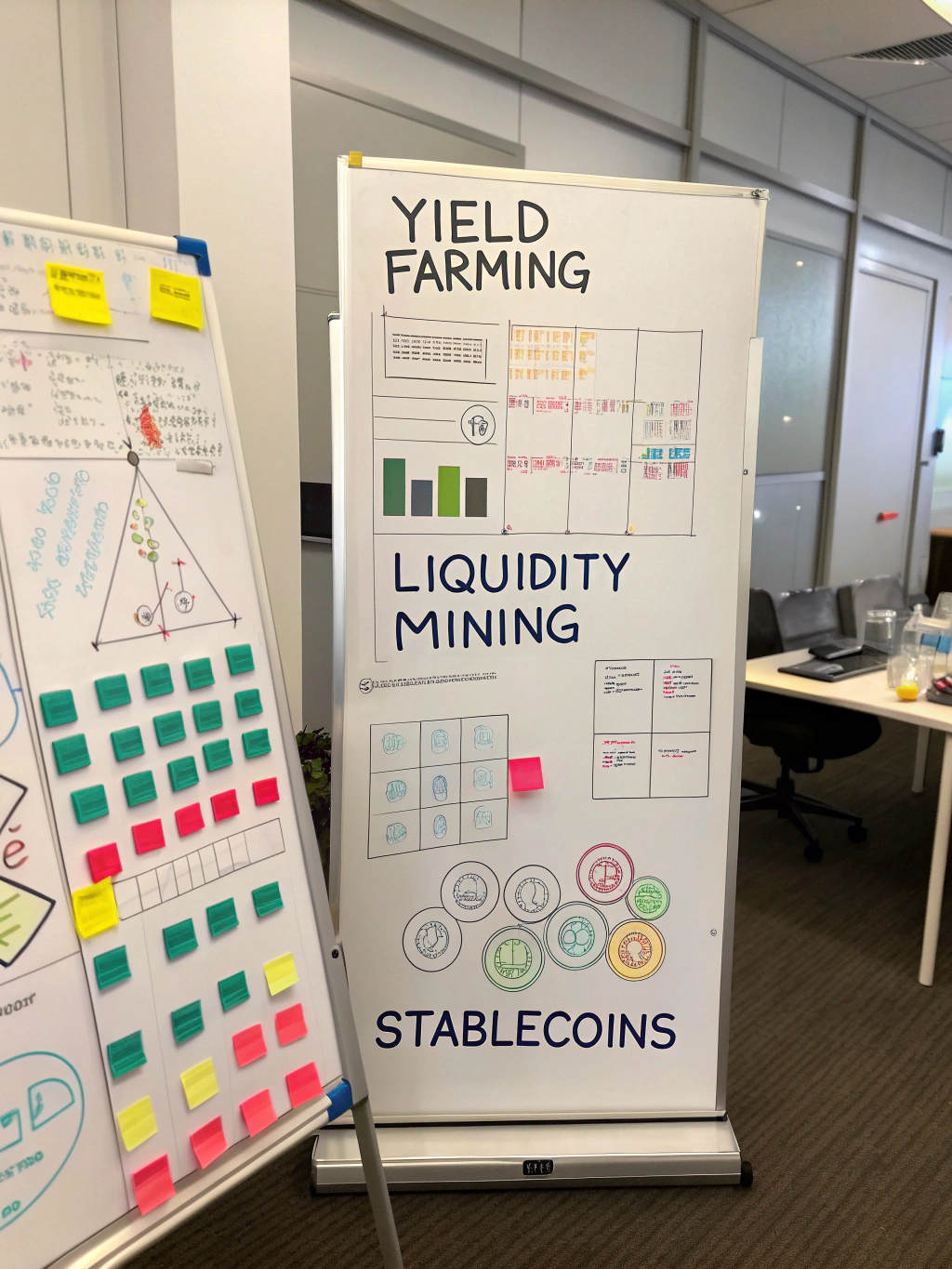Maximizing Returns: Top DeFi Investment Strategies for 2024

Navigating the Volatile Waters: Are You Ready for DeFi Investment Strategies in 2024?
The cryptocurrency market is known for its rapid shifts and immense potential, and within this dynamic landscape, DeFi investment strategies are rapidly gaining traction. But with this growth comes complexity and risk. Many aspiring investors are left wondering: are the current DeFi investment strategies truly viable, or are they simply chasing hype? The truth is, understanding the nuances of decentralized finance is no longer optional – it’s essential for anyone looking to participate in the future of finance. This comprehensive guide will delve into the core concepts, trends, and practical approaches to navigating the exciting yet potentially challenging world of DeFi.
Key Concepts & Trends in Decentralized Finance
The DeFi space has exploded in recent years, moving beyond simple lending and borrowing to encompass a vast ecosystem of applications. At its heart, DeFi aims to recreate traditional financial services – like exchanges, mortgages, and insurance – on public blockchains, primarily Ethereum. This shift is driven by a desire for transparency, accessibility, and permissionless innovation.
One of the most prominent trends is the rise of crypto yield farming. This involves locking up cryptocurrency in decentralized protocols to earn rewards, often in the form of additional tokens. It’s analogous to earning interest on a savings account, but with potentially much higher returns – and correspondingly higher risks. Platforms like Yearn.finance and Aave have popularized yield farming, offering sophisticated strategies and automated yield optimization.
Another key concept is the emergence of decentralized exchanges (DEXs) such as Uniswap and PancakeSwap. Unlike centralized exchanges, DEXs operate without an intermediary, allowing users to trade cryptocurrencies directly from their wallets. This fosters greater control over assets and reduces counterparty risk.
Furthermore, we’re seeing increased innovation in areas like decentralized lending and borrowing, providing access to capital without traditional financial gatekeepers. Staking, where users lock up their crypto to support network operations and earn rewards, is also a popular activity within the DeFi ecosystem.

Data & Market Insights: The DeFi Landscape Today
The DeFi market has experienced significant growth. As of late 2023, the total value locked (TVL) in DeFi protocols exceeded $1 trillion, according to DefiLlama. This represents a substantial increase from previous years and highlights the growing institutional and retail interest in decentralized finance.

(Please note: This is a placeholder image. A real infographic would be inserted here showing DeFi TVL growth over time.)
A recent report by Chainalysis indicates that daily transaction volume on DeFi protocols has also seen considerable growth, demonstrating increased user activity and capital flows. However, it’s crucial to note that the DeFi market remains volatile. While growth is strong, periods of significant price fluctuations and smart contract vulnerabilities have served as reminders of the inherent risks.
The rise of Layer-2 scaling solutions like Polygon and Arbitrum is also impacting DeFi, allowing for faster and cheaper transactions, thereby improving the user experience and driving further adoption.
Smarter Strategies & Alternatives for DeFi Investing
Successfully navigating DeFi investment strategies requires a nuanced approach that goes beyond simply staking or yield farming. Here are some smarter strategies and alternatives:
- Diversification: Don’t put all your eggs in one basket. Spread your investments across different protocols and asset classes to mitigate risk.
- Strategic Yield Farming: Focus on protocols with established track records and robust security audits. Understand the risks associated with impermanent loss, a potential loss of value when providing liquidity to DEXs.
- Stablecoin Strategies: Utilizing stablecoins can provide a safer entry point into the DeFi ecosystem and help mitigate volatility.
- Governance Tokens: Invest in governance tokens of popular DeFi protocols to participate in decision-making and potentially benefit from protocol growth.
Beyond traditional DeFi protocols, consider exploring newer trends like Real World Assets (RWAs) being tokenized and integrated into DeFi, opening up new investment opportunities.
Use Cases & Applications of DeFi
DeFi isn’t just about speculation; it’s powering real-world applications.
- Decentralized Lending for SMEs: Startups and small businesses can access loans without relying on traditional banks, potentially securing more favorable terms.
- Fractionalized NFT Ownership: Platforms allow users to buy fractions of high-value NFTs, democratizing access to collectibles.
- Decentralized Insurance: Protocols provide insurance against smart contract failures and other risks associated with DeFi transactions.
- Automated Market Makers (AMMs): Enable efficient trading of crypto assets with minimal slippage.
Common Mistakes to Avoid in DeFi
Beginners often fall into common traps:
- Ignoring Smart Contract Risks: Always thoroughly research protocols and understand the potential vulnerabilities before investing.
- Neglecting Security: Secure your wallets and be wary of phishing scams.
- Chasing High APYs Without Due Diligence: High yields often come with higher risks. Be skeptical of unrealistic promises.
- Lack of Understanding of Impermanent Loss: Failing to understand this risk can lead to significant financial losses when providing liquidity.
Maintenance, Security & Long-Term Planning for DeFi Assets
Managing DeFi investments requires ongoing attention.
- Secure Wallet Management: Utilize hardware wallets for enhanced security and enable two-factor authentication.
- Regular Portfolio Review: Monitor your investments regularly and adjust your portfolio as needed.
- Stay Informed: Keep abreast of the latest developments and security updates within the DeFi space.
- Diversification Remains Key: Continuously reassess and diversify your holdings to manage risk.
- Compliance Awareness: Understand and comply with evolving regulatory frameworks surrounding DeFi.
Summary & Key Takeaways
DeFi investment strategies are evolving rapidly, offering both exciting opportunities and significant challenges. Understanding the core concepts, conducting thorough research, and implementing risk management strategies are crucial for success. While the volatility remains a factor, the potential for innovation and financial inclusion within the DeFi ecosystem is undeniable.
FAQs
Is it too late to invest in crypto/DeFi?
No, it’s not too late, but it requires caution. A thoughtful, risk-aware approach is essential.
How can small businesses use AI?
Small businesses can leverage AI for tasks like customer service chatbots, marketing automation, and data analysis.
What tech stacks scale best?
Cloud-based tech stacks like AWS, Google Cloud, and Azure are generally known for their scalability.
Ready to learn more about DeFi investment strategies? DeFi investment strategies offer in-depth insights. Share your thoughts on DeFi in the comments below!
Disclaimer:
Cryptocurrency investments are highly speculative and involve significant risk. This is not financial advice. Always conduct your own research and consult with a qualified financial advisor before making any investment decisions.
Share this content:














Post Comment